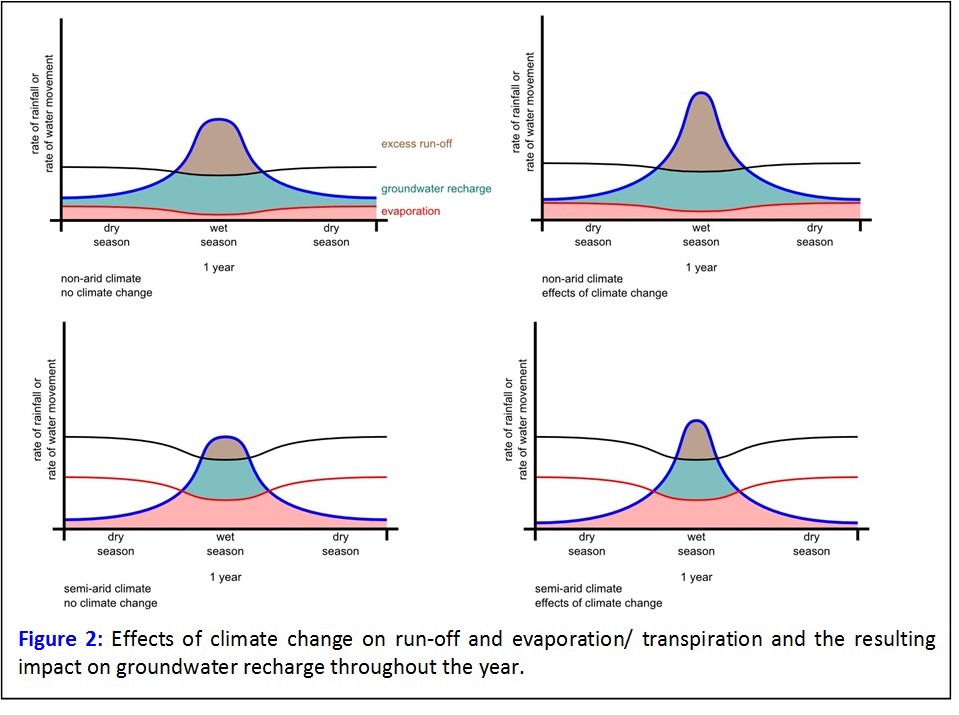 Christopher Barry is a doctoral researcher at the University of Birmingham. He has written for the GfGD Blog in the past – detailing his contribution to water projects in Burkina Faso and fundraising efforts to support such work. We have recently added a briefing note to our website, written by Christopher, describing the role of climate change on global groundwater resources. You can access the full briefing note here.
Christopher Barry is a doctoral researcher at the University of Birmingham. He has written for the GfGD Blog in the past – detailing his contribution to water projects in Burkina Faso and fundraising efforts to support such work. We have recently added a briefing note to our website, written by Christopher, describing the role of climate change on global groundwater resources. You can access the full briefing note here.
To help share the contents of this briefing note we are publishing a portion of it’s contents over a series of four blogs. In this third instalment we focus on the effects of temperature and precipitation changes on groundwater recharge. At the end of each blog is a link to the full PDF, where you can read each section in its full context and find a full reference list.
4. Temperature Changes: Effects for Groundwater Recharge
4.1 What Happens
Groundwater recharge occurs by rainwater infiltrating through the soil. Water at the surface will either enter the soil and groundwater, evaporate, run off into rivers and the sea, or be consumed. The atmospheric rise in temperature increases the amount of surface water being evaporated, and therefore reduces the amount of water available for groundwater recharge.
In basins in which the groundwater is recharge from melting ice, the rise in temperature increases the rate of recharge by increasing the rate at which the ice melts. But eventually the ice becomes depleted and then that source of water is lost.
4.2 Example
Tajikistan, in Central Asia, is a country that is highly dependent on melt water from glaciers as a source of water. In the Pamir mountains of Tajikistan, a retreat of glaciers due to melting of 1% per year has been observed. This raises concerns about the long-term security of this water resource. In the short-term, increased rates of melting poses the risk of large outbursts of water. Such an event occurred in 2005, killing 25 people (Mergili et al., 2012).
5. Precipitation Changes: Effects for Groundwater Recharge
5.1 What Happens
Climate change focuses the rainfall across the year into a shorter, more intense wet season. In humid and temperate areas, much of the intense rain water may be wasted into the sea, because the soil has a limited capacity for infiltration. In these areas, intense rainfall caused by climate change is likely to overwhelm the process of infiltration and therefore reduce annual groundwater recharge.
Conversely, in the arid and semi-arid climates of the sub-tropics, recharge is favoured by intense rainfall. This is because rain water falling at a slower rate is likely to be largely evaporated. More intense rainfall is too fast for a large proportion of rainwater to be evaporated, so a lot more of the water is able to infiltrate.
These factors are demonstrated in Figure 2.

For basins containing ice or glaciers, the type of precipitation is also important. Rising temperatures increase the amount of rainfall relative to snowfall. The effect of intense rainfall is reduced if some precipitation falls as snow, because the run-off is delayed until the snow melts. Therefore a reduction in snowfall compared to rainfall also increases the intensity of wet season run-off.
5.2 Example
In the UK, a set of climate change projections developed by the Meteorological Office called UKCP09 [1] have been used to assess the likely outcomes of changing climate on water resources. UKCP09 consists of eleven equally likely climate scenarios projecting the next 150 years. Simulations of river flows consistently show that we should expect a decrease in mean flow rates and even lower flows during droughts, although there is variability in the predicted results for high flow events. Conversely, the effect on groundwater level is less pronounced – though for the UK a general decrease is more likely, some climate projections would give an increase with some groundwater models.
[1] http://ukclimateprojections.metoffice.gov.uk/21678
Download the full briefing note (including a reference list) on the Water and Sanitation page of the GfGD website. The final instalment, Part 4, will be published on this blog soon.
